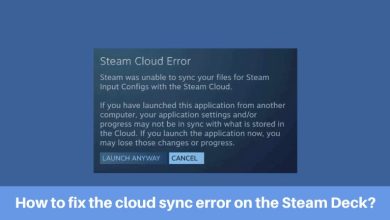How do I fix Disk Utility on Mac?

Disk Utility is a crucial application on macOS that allows users to manage internal and external storage drives. Whether you’re verifying disks, erasing corrupted volumes, or partitioning drives, Disk Utility plays a central role in maintaining your Mac’s storage health. However, there are times when Disk Utility itself can become problematic — it may freeze, crash, or fail to recognize connected drives. Understanding how to fix Disk Utility problems is essential to keeping your Mac running smoothly.
Common Symptoms of Disk Utility Issues
Before jumping into fixes, it’s important to recognize the signs that something may be wrong with Disk Utility:
- Disk Utility crashes or fails to open.
- Disks are not showing up in the Disk Utility sidebar.
- Error messages like “Couldn’t unmount disk” or “Filesystem verify or repair failed.”
- Incorrect disk information displayed, such as total capacity or partition layout.
Step-by-Step Solutions to Fix Disk Utility
1. Restart Your Mac
Sometimes, a simple restart can resolve temporary glitches affecting system utilities like Disk Utility. Restarting clears cache and stops background processes that may interfere with drive detection and performance.
2. Run Disk Utility from macOS Recovery
If Disk Utility isn’t working correctly in the standard environment, try accessing it through macOS Recovery:
- Shut down your Mac.
- Turn it back on and immediately hold down Command (⌘) + R until the Apple logo appears.
- Select Disk Utility from the macOS Utilities menu.
From here, you can try to repair any disks or volumes that are giving you trouble using the First Aid feature.
[ai-img]macos recovery, disk utility, repair disk[/ai-img]3. Use Terminal for Disk Management
If Disk Utility remains unresponsive, Terminal offers a powerful alternative for managing disks using the command line:
- Open Terminal from Applications > Utilities.
- Type
diskutil listto see all connected volumes. - Identify the problematic disk and use commands such as
diskutil eraseDisk,diskutil verifyDisk, ordiskutil repairVolumefor targeted actions.
Be careful with Terminal commands, as executing the wrong one can lead to data loss. Always double-check the syntax and the disk identifier before running any command.
4. Update macOS
A faulty or outdated macOS version can cause utility apps like Disk Utility to malfunction. To check for updates:
- Go to System Settings or System Preferences.
- Select Software Update.
- Install any available updates and restart your Mac.
macOS updates often include bug fixes and improvements to core system applications, potentially resolving unexpected behavior in Disk Utility.
5. Reset NVRAM and SMC
Your Mac’s configuration memory could be at the root of some Disk Utility issues. Resetting NVRAM and the System Management Controller (SMC) can help resolve hardware or low-level software problems.
To reset NVRAM:
- Shut down your Mac.
- Turn it on and immediately press and hold Option + Command + P + R for about 20 seconds.
To reset SMC, the steps vary depending on your Mac model. You may need to check Apple’s official documentation for your specific device.
6. Try Safe Mode
Safe Mode only loads essential software and drivers, which can help isolate whether a third-party application is affecting Disk Utility.
- Shut down your Mac.
- Restart while holding the Shift key until you see the login screen.
Once in Safe Mode, launch Disk Utility and check if the issue persists.
When to Seek Professional Help
If none of the above steps solve the issue, it may be time to contact Apple Support or visit an Apple Authorized Service Provider. Persistent problems could indicate deeper hardware issues, such as a failing drive or corrupted firmware.
[ai-img]apple support, mac repair, disk issue[/ai-img]Conclusion
Disk Utility is a foundational part of macOS, and its proper functioning is essential for maintaining the health of your storage drives. When issues arise, methodically trying each of the troubleshooting steps listed above will often resolve the problem. Always ensure your Mac is backed up before making any significant changes, especially when using Terminal or performing disk repairs. A proactive approach and timely intervention are key to keeping your Mac’s storage system operating smoothly and securely.



